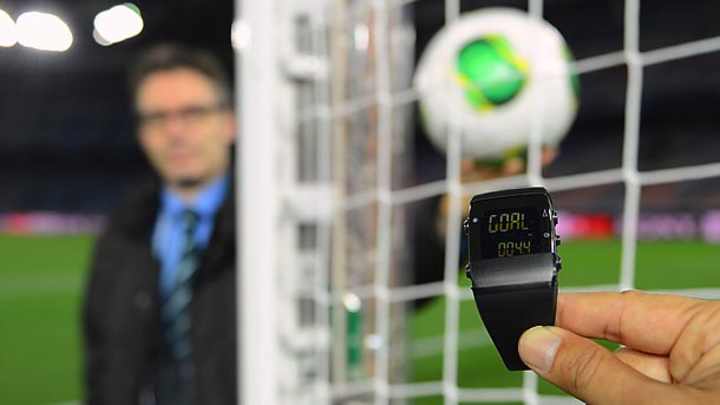This is what goal-line technology looks like

GoalControl-4D technology informs referees when a goal has been scored with a multi-camera system connected to a wristwatch-style notifier. (Michael Regan - FIFA via Getty Images)

After countless missed calls, flailing arms, and shouted appeals, FIFA's choice of goal line technology is beginning to make a visible impact on the beautiful game.
The on-field impact of the technology is inarguably good -- how can you hate on getting exact visual confirmation of some of the game's biggest moments? But what struck me while watching it in action in CF Monterrey's game against Raja Casablanca had nothing to do with the on-field benefits. Rather, it was that I was somehow unprepared for such a noticeable change to the on-air product.
Broadcasts of the beautiful game have stayed incredibly consistent through the years, even as advancing technology allowed replays to be played slower and at more angles, lineup graphics to be progressively specific, and the broadcasts themselves to be in higher definition in more places than ever before. Advertising boards now flash and flicker like Times Square. Pictures from the game are larger, crisper, and more in-focus. But even as things advanced around the game, things stayed basically the same in the game itself. That is, for many people, part of the appeal.
Given that, goal-line technology represents the first game-borne change to the visual and rhythmic poetry of a match since the advent of the electronic substitution board. That's kind of a big deal. Especially since it will be in use in front of billions of eyeballs in Brazil next summer.
So here's what goal-line technology looks like, step-by-step, starting with this clear non-goal for Raja Casablanca. The forward managed to sneak the ball by the goalkeeper at the endline, and though the ball rolled tantalizingly in front of the goal, it never went over.
That it wasn't a goal seemed clear to all who saw it the first time through, but clearly FIFA has a case of "New Toy Syndrome." After play had reached a stoppage, the broadcast went back to this replay of the event, caught by one of the cameras installed by GoalControl, FIFA's goal-line technology supplier of choice:


Magic television gremlins then removed all the players and painted the field blue.

Then they zoomed in.

And just like that, it was confirmed. No goal. Just like everyone suspected.

In total, this goal-line replay took maybe 10-15 seconds. Yet that short time on such an innocuous event could signal the start of a bigger, much better change in the world's game.
